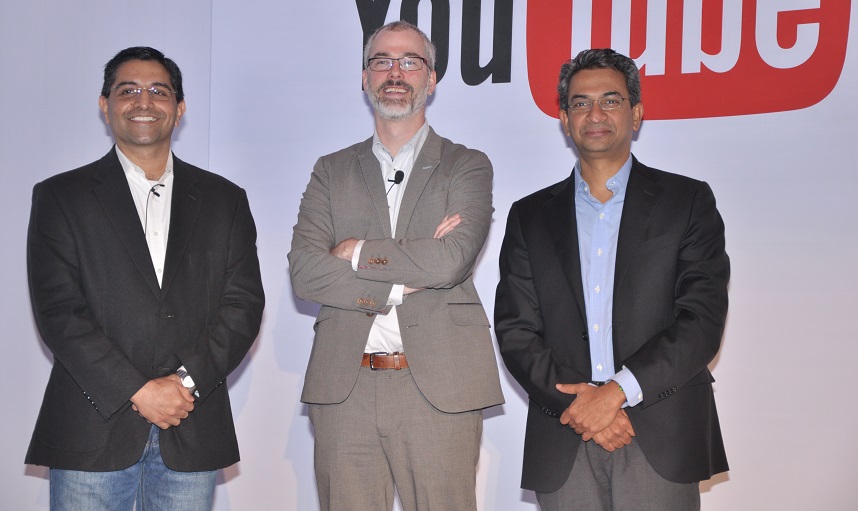If you have been worrying over slow internet speed crippling your video viewing experience on your smartphone, the biggest video aggregator YouTube has come up with a fitting response to it. Starting today, three developing countries- India, Philippines and Indonesia- will be able to watch its videos even without an internet connection.
Addressing the intense bandwidth, spectrum and affordability concerns on data and taking into account the growing mobile internet audience, YouTube has decided to allow viewers to save their favourite content in an ‘offline’ mode and watch it while there is no or low internet connection. “India is predicted to have about 300 million internet users by 2015 and 500 million by 2017 and most of this is expected to come from handheld devices. We found out that new users typically use internet less because of bandwidth and affordability issues. Despite these constraints, YouTube has been a success but we want the viewing experience to be better,” says Google India MD Rajan Anandan. Data shared by YouTube states that 40 per cent of its traffic is from mobile.
To avoid constant buffering, subscribed users can choose to save the video to offline mode from their Android and iOS enabled devices, while on a good Wi-Fi or stable 3G connection and then view it later on with no internet access or when it is low. The motto is to give high quality video viewing with few delays and little buffering. The viewing experience will be just as normal, including playout of ads which can be monetised.
The catch is that once a video has been saved to offline mode, it can only be kept stored for maximum 48 hours without an internet connection, after which it will get deactivated from the offline playlist. This is to ensure that the usage data is sent back to the content provider. Any form of internet connection within two days would allow the video to be extended for two more days.
“This is a real consumer need in the country. We spoke to hundreds of users and heard that they are struggling to use our platform. We believe this will drive up usage. The feature is also restricted to subscribed users so that we know at time you have downloaded it in order to time it for self destruct in 48 hours, if you don’t access an internet connection by then. This is to assure our partners that their content is not being misused,” says YouTube APAC regional director of YouTube partnerships Ajay Vidyasagar.
YouTube has partnered with several Indian content companies to allow their intellectual property (IP) marked content to be available offline including T-series, Shemaroo, Saregama, Yashraj Films etc. User generated videos that don’t have any IP are automatically given the offline tag. Negotiated deals with content partners allow them to monetise their properties through every viewing of a video, making it a fitting proposition for advertisers as well.
Users can choose to save the content either in SD (360p) or HD (720p) mode. Saregama MD Vikram Mehra and Shemaroo director Jai Maroo expressed delight over this new innovation that they have partnered with for getting more traction from YouTube. This feature is aimed to benefit the interior towns with low connectivity. Desktop and PC viewers won’t be able to avail this feature. Ajay says that they don’t yet have the technology that allows them to build in the intelligence to prevent misuse of the content from a desktop.
However, the offline mode is only applicable to Indian content. This includes 10,000 Indian movies, 20,000 Indian TV Shows and 250,000 songs in eight languages. The functionality has been kicked off with the entertainment genre but it plans on adding other content as well. Ajay also adds that there isn’t any shut down timeframe for it as of now.
The main reason for getting this innovation for the first time ever in the world in India is due to connectivity. With meager 3G strength and high expectation from 4G coming soon, does YouTube hope for better? “We have heard from our partners too that 4G will be significant. But the real problem is that we have too many people (demand). 18 months ago, Telcos thought 3G would solve the problem but now it’s gridlocked. On the other hand the demand for entertainment is unbelievable,” highlights Ajay.


